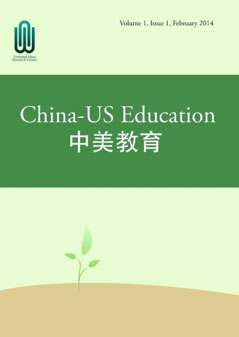


Volume 10 Issues 3-4 (2023-12-31)
Volume 10 Issue 1 (2023-03-31)
Volume 8 Issues 1-3 (2021-10-31)
Volume 7 Issues 3&4 (2020-12-31)
Volume 7 Issues 1&2 (2020-06-30)
Volume 6 Issues 3&4 (2019-12-31)
Volume 5 Issues 1-3 (2018-06-30)
Volume 4 Issues 3&4 (2017-08-31)
Volume 4 Issues 1&2 (2017-04-30)
Volume 3 Issues 5&6 (2016-12-31)
Volume 3 Issues 3&4 (2016-08-31)
Volume 3 Issues 1&2 (2016-04-30)
Volume 2 Issues 5&6 (2015-12-31)
Volume 2 Issues 3&4 (2015-08-31)
Volume 2 Issues 1&2 (2015-04-30)
Volume 1 Issues 5&6 (2014-12-31)
This study examined Chinese English major students' learning motivation and self-identity change. Using both quantitative and qualitative research methods, this study investigated English major students' English learning motivation types, self-identity changes after learning English. The participants were 110 juniors who studied at the school of foreign languages in a Chinese university. The results indicated that double-major students had little disparity compared with English major students on motivation types and the main differences were embodied in achievement motivation, learning situation motivation, individual motivation, and intrinsic interest motivation; further, there were considerable differences in self-identity changes between English major students and double-major students. Implications for teaching are discussed.
This paper discusses the English translation of Chinese dish names. It analyzes the features of Chinese dishes and dish names through the discussion of Chinese and English cultures, especially the food culture. It then further identifies the problems in the existing English translation of Chinese dish names and then explains the corresponding causes. Finally, this paper describes five translation methods, namely, literal translation, free translation, literal plus free translation, transliteration, and literal plus transliteration.